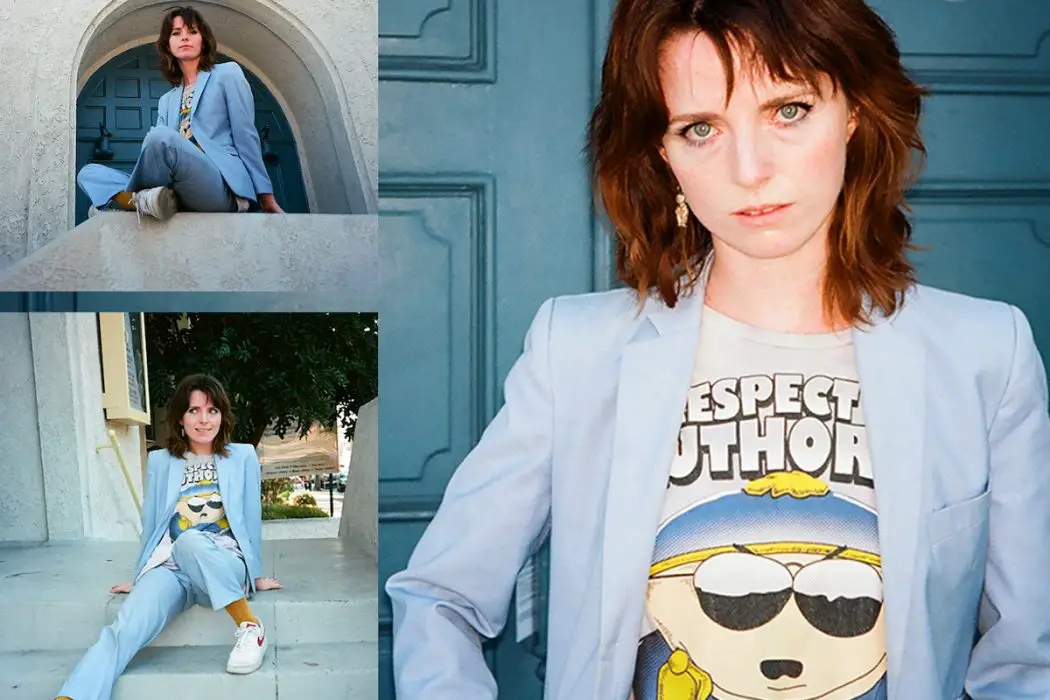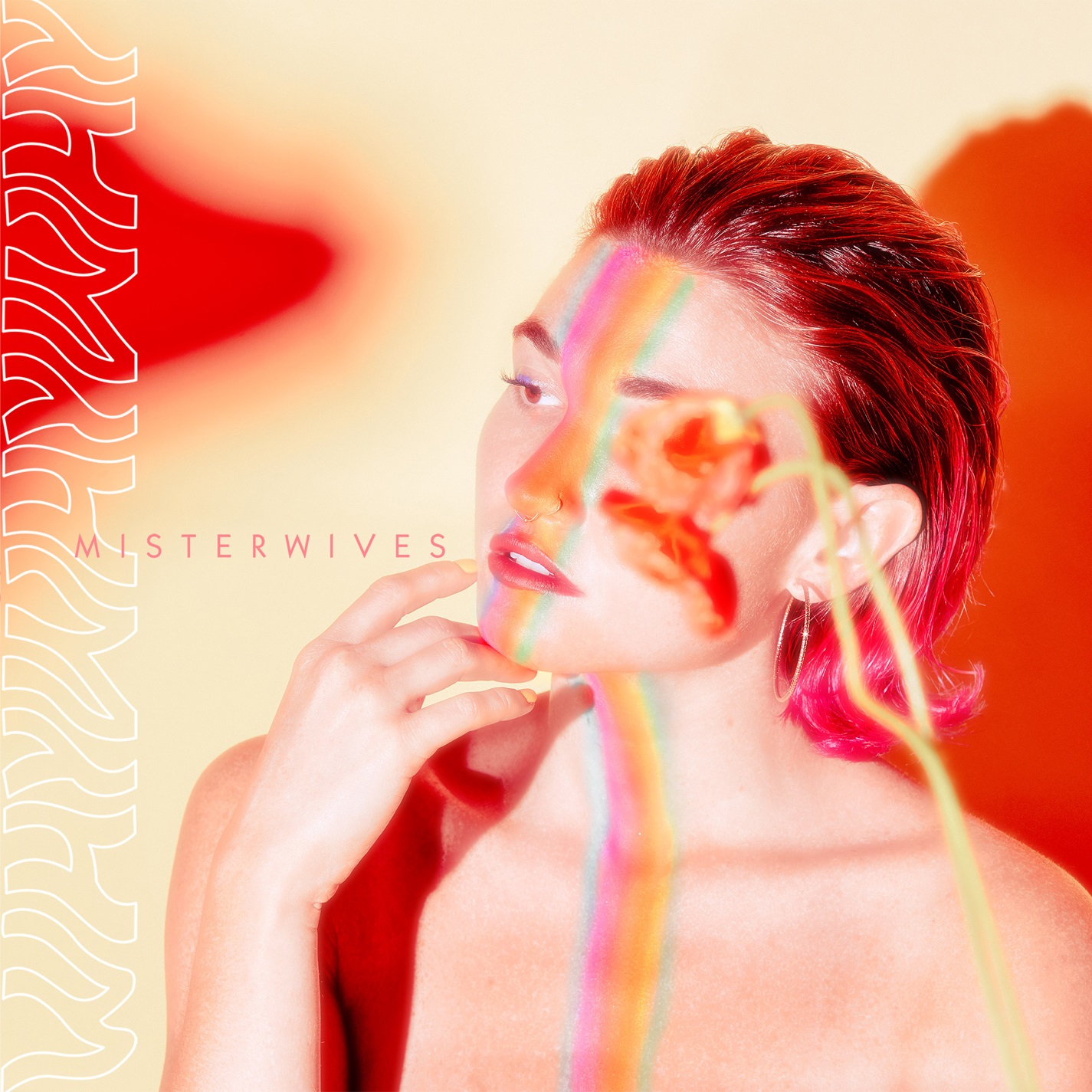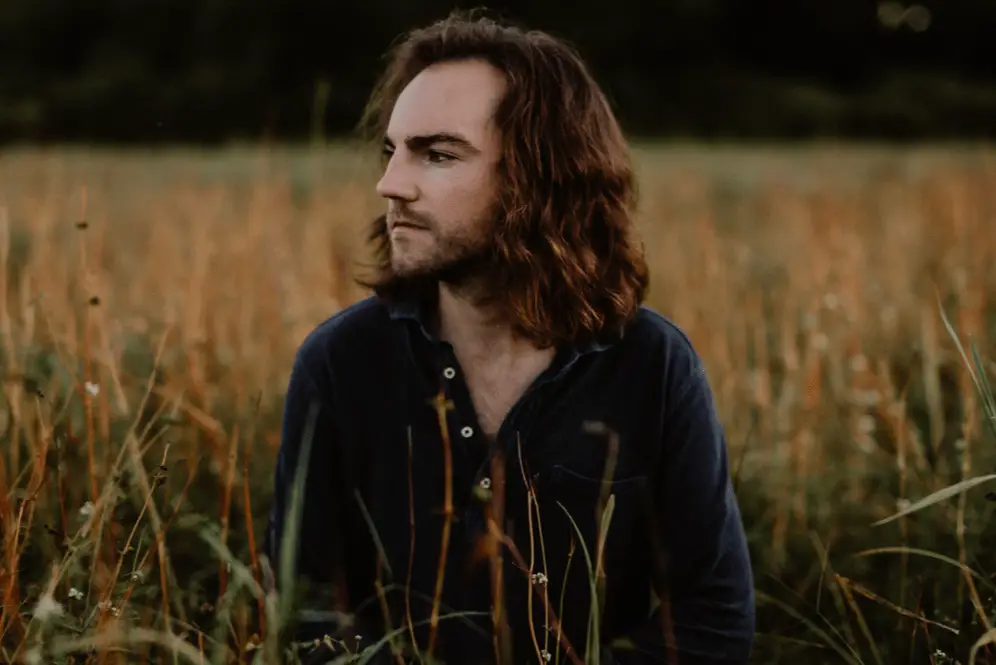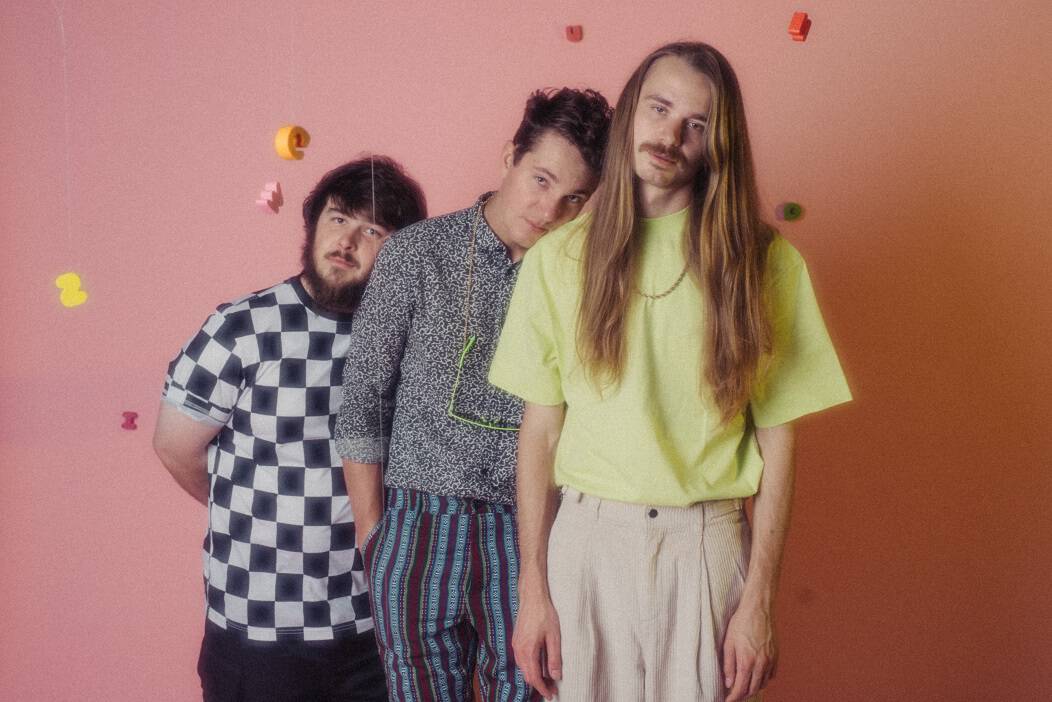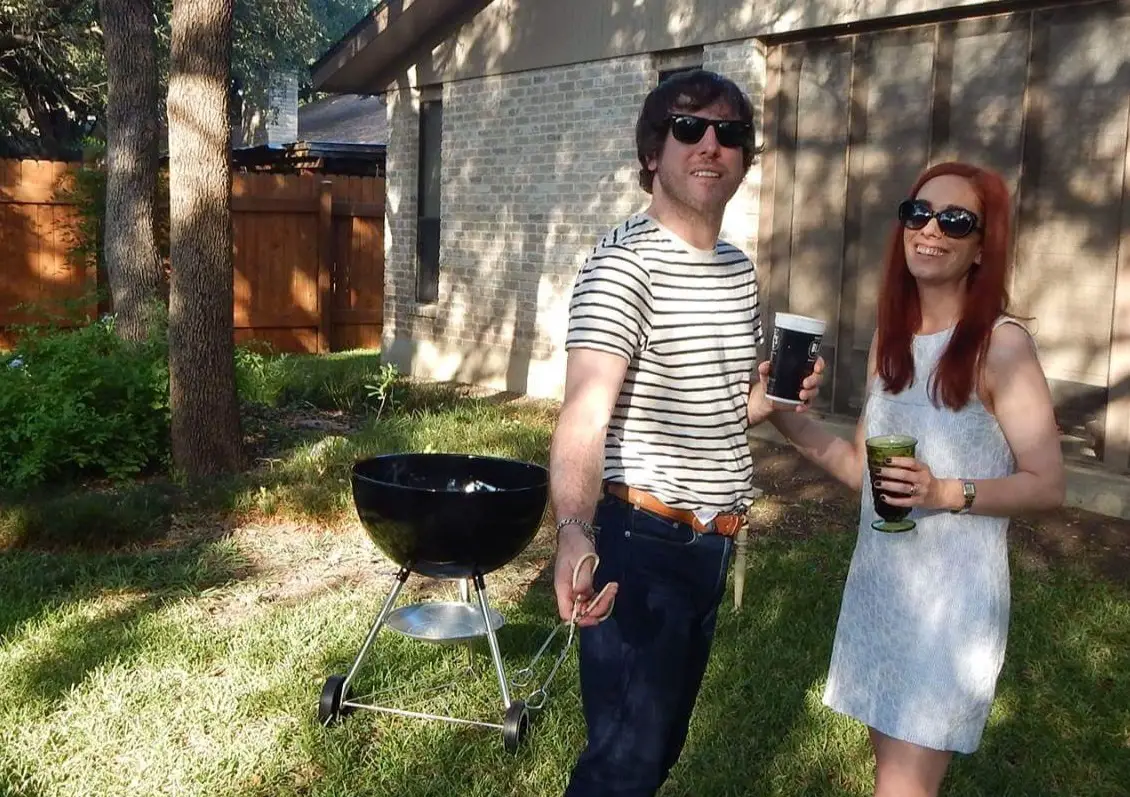Multitalented Los Angeles creative Ember Knight breaks down their latest DIY spectacular ‘CHERYL’, ponders brand-building in a post-cringe society, and decides to destroy their iconic lion suit.
Stream: ‘CHERYL’ – Ember Knight
[bandcamp width=100% height=439 album=3231588178 size=large bgcol=ffffff linkcol=0687f5 artwork=small]
Note: This interview was conducted with COVID safety practices in place. The writer and artist both tested negative for the virus beforehand.
After several trips around a particularly confusing, steep block on the edge of Downtown Los Angeles, I abandon Google Maps and decide to navigate on foot. I hear a voice call my name, and lo and behold — Ember Knight, clad in their signature, powder-blue suit, waves to me from the doorstep of the charming, old yellow house I aimlessly stand in front of. It really is a city of chance.

“I’m nervous,” they confide, as we walk briskly down the hill. This honesty comes as a surprise, considering Knight’s reputation as a fearless performer—they used to do stand-up shows where they’d strip down and crawl around the audience, steal beers from the crowd, and pretend to kill themselves with a convincing prop gun. We make small talk about California’s many false autumn starts (it’s the day before Halloween and in the high 80s), comment on office spaces we pass where short-lived DIY venues used to be, and circle around Echo Park Lake to end up at Stories on Sunset for some coffee. A group of their friends flag them down at their table on the back patio, engaging us in small talk about having good hair—it’s pedestrian LA talk, but the casually theatrical way in which Knight commands attention is magic.
Despite Knight’s apparent charisma, the lifelong LA resident has always been a misfit in the art scene.
Their aforementioned performance antics got them kicked out of and banned from venues, and they struggled to fit in with the cool kids who are privileged enough to afford to be LA artists. “I can be mean, but I can’t be rich,” they quip. It also doesn’t help that they’re creating some of the most unorthodox art currently coming out of the city.

Knight is building a multimedia world all of their own. They have a YouTube series with their partner Bobby McCoy called “The Ember Knight Show”—a whimsical, slightly crass homage to The Pee-wee Herman Show, mixed with the wholesomeness of Mr. Rogers. In 2017, they came out with the feature film King of LA (directed and co-written by McCoy), and the next year they released their delightfully theatrical debut album The Disappointment Cowboy with an accompanying live concert film spectacular, which paved the way for Knight’s latest creation.
Nearly two years in the making, CHERYL, named after Knight’s mother, is a rock opera that explores the “emotional topography” of their journey towards self-acceptance. “Disappointment Cowboy is for other people: memories, friendships, apologies and explanations. It’s for reflecting on relationships. CHERYL is for me, dealing with my shit,” Knight explains. “So for the listener it’s also about yourself—a personal soundtrack for staring in the mirror and crying until the image is clean.”

On the surface, CHERYL tells the story of a young woman who checks into a lasagna-intensive mental hospital to try to remember her favorite color.
It’s grandiose, unapologetically messy, joyful, darkly hilarious, and vulnerably honest. Beyond that, it’s about many things that are all inextricably linked, in Knight’s experience. “It’s about gender, but it’s also about getting dressed, but it’s also about social media, but it’s also about my mom,” they say. “Like, does this make sense that these are all the same thing? They are.”
We walk down to Echo Park United Methodist Church, where Knight recorded the majority of CHERYL and attends service. Affordable on a micro-budget and already equipped with a piano and an organ, Knight spent countless hours here over the course of four months in 2019, engineering the album almost entirely on their own (aside from two sessions with Phil Hartunian and Joel Jerome at Tropico Beauty). The night before we met up, they sent me a mini-documentary McCoy filmed throughout the process, in which Knight configured every setup themselves as well as conducted the choir and small orchestra—they actually have little to no formal theater or musical training other than their time as a teen in a performing arts high school. Adept at faking it until they make it, Knight spent hours painstakingly learning how to play the piano parts they had in their head, often re-recording it up to 30 times before getting a clean take.

During this all-consuming process, the only music they listened to were their own demos. “This morning I listened to ‘Live Your Life’ by T.I., with the ‘Numa Numa’ sample, and that’s the only thing I listened to today,” Knight says. “Truthfully, I know nothing about music culture. I don’t really try to emulate anything when I write music. I was homeschooled in the beginning of my life and I never caught up on culture so I just really don’t know.”
Knight’s beginnings as an oddball began long before their homeschooling, as did their religious journey — their parents were a part of a cultish, New Age group that literally banged gongs at their birth. As a child, these members treated them as somewhat of a “chosen one,” telling them that they would solve the world’s problems. The pressure to become something that other people expected and needed consumed young Ember’s brain as they not only tried to figure out why these adults thought they were special, but also fretted over how they would end global warming (another piece of their supposed destiny). Knight recalls their extravagant solution in “Lunch Lasagna”—“She was gonna fly up in the sky / And drop a big bucket of water down through the layer of pollution / Something like a hole that needed to be sewn? / I don’t know / Good luck, bitch.” Clearly, their atypical upbringing set up one of the most prominent riddles of CHERYL years ago: the quandary of figuring out and accepting who you are, and accepting the fleeting, unpredictable nature of life.
The many lasagna references throughout the album, by the way, are another Easter egg from the Ember Knight universe. “It’s somehow the most body horror part of the whole thing,” they laugh as we walk to hip LA health food store Lassen’s. The choir’s “40% vegetable, 20% casserole” motif is directly inspired by old charts at the Rockhaven Sanitarium in La Crescenta, where the videos for CHERYL were filmed. The now-defunct “feminist mental health institution for mentally ill women” (according to the History of Rockhaven webpage), which once hosted Hollywood constituents such as Marilyn Monroe’s mother and the Glenda the Good Witch actress from Wizard of Oz, implemented customized—and very specific—meal regimens for all their patients. “I think the culture of women is very much this way, on like this eternal quest for wellness, fixing yourself,” Ember reflects, connecting their feelings on Rockhaven to their observations of their mother’s own fixations with food and constant self-improvement. “I think that mom bullshit in general is not very explored. Dads are stylish, we make a lot of jokes about dads, dads in comedy ha-ha,” they observe. “It’s very easy to make art about dads. Art about moms? A little cringe, a little upsetting. We don’t want to talk about it.”

As we aimlessly stroll the Lassen’s supplements aisle and reflect upon the implications of shopping here, Knight paints a picture of Rockhaven’s magic for me. “I went in, I walked around, and I just instantly felt charged. It was like a haunted house, but full of sunlight and brightness, like the whole place is just beautiful, pastel colors,” they describe. The stylishness of the asylum assisted Knight in processing their own journey with mental health. “In the same way that I try to make things that are like an articulation of a feeling so that if other people are having that feeling they can like point at the art and say ‘that’s how I’m feeling, I couldn’t articulate that,’ Rockhaven kind of did that for me, as a location,” they continue. “And then [my experience with mental illness] was beautiful and something worth exploring, as opposed to ugly and cringe that I needed to hide away. So I don’t think I would have made the record or dealt with the shit in this way at all if I hadn’t had that context to make it safe, make it beautiful.” The idea of willingly institutionalizing oneself is a refreshing, positive spin on contending with mental health, especially since women’s (or AFAB) mental states and overall wellness are typically explored through a damning, misogynistic lens. Knight summarizes the latter as, “the idea that the longer you are a woman, the worse you become at it. And how unfair that is, and how much that makes me wanna escape anything femme. ‘Cause it feels like a death sentence.”
“A theme of making [CHERYL] was that I couldn’t tell if I was queer or just sexist,” they mentioned earlier, as we gazed out at Echo Park Lake. “It’s like ‘Am I trying to escape something because I don’t think it’s stylish, or is—like what thing is this?’” they elaborated. “And what I arrived at is that it doesn’t fucking matter, and I feel confused about gender and… I’m not faking anything.” Over the course of creating CHERYL, Knight’s examination of their own internalized misogyny helped them in coming to terms with their genderqueerness. “I had to get to a place where it was like, ‘Whatever this is, I’m gonna put a label on it and I’m gonna be upfront about it, and that’s okay.’ And it’s okay for it to be shifting. And when I was able to do that, it no longer felt like I had to in every moment represent these many pieces of myself,” they added. While getting dressed in the morning sparks an identity crisis for many gender non-conforming individuals, Knight realized that picking their outfit for the day is about expressing many facets of their identity without needing to arrive at a single, concrete conclusion. “That I could sometimes wear a dress and not be keeping one hand over here on this chair, and keeping one over here on this—like no, I can sit in different chairs at different times. I can be a person that moves around.”
CHERYL’s protagonist’s struggle to remember her favorite color (is it red, yellow, or blue?) is not just about gender roles, but how we present ourselves in various ways. Knight describes the initial thought process as “when I find which of these colors is the right one for me, I’m gonna feel great. I’m gonna feel so amazing forever, every day.” The three colors directly represent key costumes in Knight’s life—their blue suit, the yellow lion suit, and a red dress that they associate with the femininity they were brought up with—and the emotional experiences connected to them, partially because curating a look is key in self-branding. In a city where who and what you know are social currency, this anxiety is amplified for those who are trying to achieve their dreams. “It’s a job that you shouldn’t have, because people should be able to get a sense of you in person. I’ve felt like ‘Which fucking one is it?’ I can kind of summarize myself in these different ways, but I can’t be all of them at once,” Knight says of the hell that is personal and social branding. “You can’t pick the perfect thing, and it feels like in that moment whichever one that you pick, you’re deciding the rest of your life. What a nightmare!” As for getting dressed, however, Knight is much more comfortable confronting femininity than they were at the start of making the record. “I can wear a dress now and I couldn’t before, without feeling like I was gonna puke,” they proclaim.
More than anything, CHERYL is a journey towards embracing the unknown and imperfection. “It’s not an acceptance of uncertainty, it’s like once you accept there isn’t any uncertainty. Like it negates, you know? The question is flawed,” Knight explains. “It’s like ‘What is your favorite color?’ and there’s no answer… you can’t see anything unless you’re seeing all the colors.” To them, self-actualization at every stage of growth will be dishonest and stunted unless we allow ourselves to be fully authentic. “’Cause you can’t see yourself, and your reflection’s not gonna make sense if you’re only seeing part of it… that’s why it’s a record about acceptance. If I can’t see all the gross, rude parts of myself, then I can’t really do anything polite. Like I—if I don’t see the parts of myself that are alienating and shitty, then I can’t really be friendly. Because I’m gonna do it by accident, push people away,” they continue. “And that’s the room for cringe, and the room for a full picture is like—I can’t be any of the things I wanna be, or doing any of the things I wanna do, if I’m constantly editing the image, and trying to repress something and decide what gets to be shown.”
As is evident in the dark “Mvt. VI – Help! Help!” accepting the impossibility of knowing or being it all allows ugliness its proper place as something human. Closing rock ballad “Mvt. VII – Home,” which Knight wrote after finishing the rest of the album, takes the riddle’s conclusion to a surprising yet plausible place. “It’s like now that we’ve dealt with that…death is very soon. It’s the grace of death and the promise of death, which sounds very high-falutin to say but like, knowing that it is so soon, it’s kind of like…I don’t need to solve this,” they conclude. “I really don’t need to solve this because soon I will decompose into the earth and I will return to what I came from and all that I’m supposed to be will still be, or it’ll be gone or whatever, and I can’t change that, and so it’s okay… I don’t wanna waste my life worrying about it.”
Instead of fearing what we are not sure we will ever master, Knight finds solace in death’s promise. “There’s a grace in that release. And we do suffer while we are alive, and we are divided, and we are less than whole and complete,” they contemplate. “But even if I was the very best at branding myself, and even if I was or become a gazillionaire, and my art is revered and so useful and so pedestalized and all of these things, still I will die. And if none of that happens and I struggle and fuss, and am, you know, grumpy my whole life, still I will die. And so that’s very comforting. I can’t change that outcome even if I try my hardest, and I can’t change that outcome if I fuck up the worst. The best I could do or the worst I could do…it doesn’t matter.”
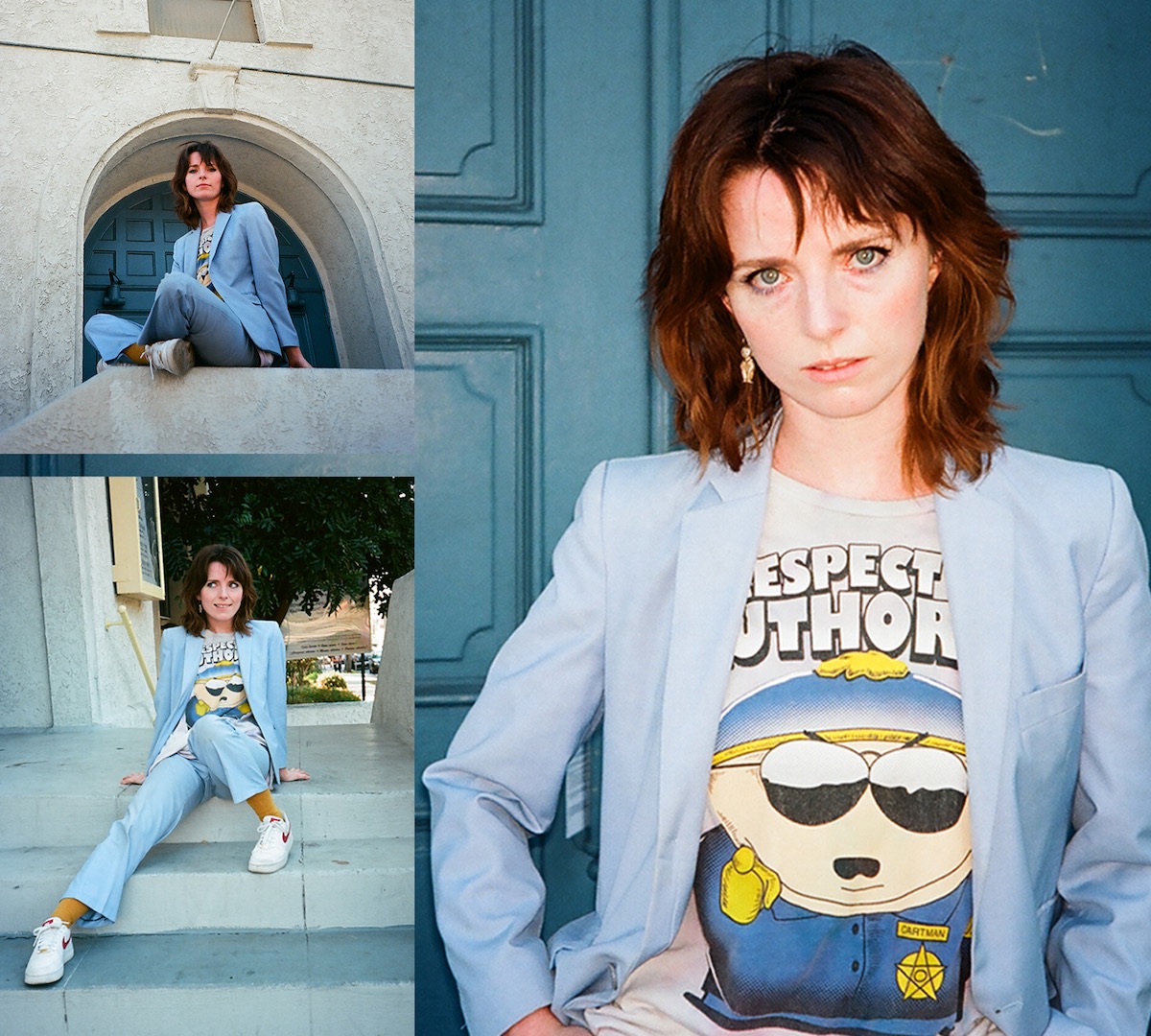
Knight may seem like they’ve got it all figured out, but most of their philosophy is a direct result of creating CHERYL, and the continuous process of understanding why they made it.
“Making it was part of the journey for me, I didn’t realize all these things and then set out to do it,” they admit. “And most of my projects are that way, like something will feel right, but it’ll be the process of exploring it and actualizing it before I learn what it’s actually about.” They accept that they aren’t going to appeal to everyone or “belong to any club” as a result of their weirdness. Maybe in a few years, more people will be more open to what they are doing—after all, the same antics that used to get them banned from comedy clubs are now being taught in clown classes throughout the city. “Clown class is the worst shit. It’s so awful,” they say. “Now that you pay an old man to learn how to do it, it’s safe. Now that should be the opposite.” Even if some bitterness at the in-crowd remains, these thoughts don’t plague Knight the way they used to; recognition isn’t the point of all this. “Even if there are a few people like us that need to hear what they’re feeling articulated, then that is my job,” they declare.
Knight’s job is just beginning. The visual album portion of CHERYL is yet to be released in full, and they have filmed new installments of “The Ember Knight Show” with McCoy for Adult Swim, which premiere later this month. If all goes well, these will hopefully serve as a vehicle for an actual television show. They’ve also got another audio pet project in the works. “Me and my friend Vera [Drew] are starting a Jackass podcast about how it’s actually a very inspirational show about friendship,” Knight teases, revealing a few special (but for now, secret) guests they are bringing on. The next big thing on their to-do list, however, is burning the iconic lion suit in a beach ceremony early tomorrow morning.
For one, the lion suit is a reminder of darker times. “I’m very scared to lose it because it indexes me as poor, and I feel like a class traitor letting it go,” they comment. Knight spent their teen years and early adult years as an actual starving artist, living in temporary places like “a laundry room floor and a month-to-month hotel on Skid Row,” and wandering the streets at night. “It was protection. People didn’t fuck with me ‘cause I clearly had nothing and was weird, you know?” they somberly recall. “I thought it was a really original outfit but looking back it’s like ‘It’s Max from Where the Wild Things Are.’” The lion suit is also a reminder of their more chaotic times as a reactionary—besides literally being shunned from the spaces they were inserting themselves in in an attempt to break into comedy, they lost a lot of friends with their behavior. “Every project I did in it, all those friendships kind of—it was evil, it’s cursed, it’s a cursed outfit,” they emphasize. “And it represents, to me, coercion, and like, trying to get people to work with me, and trying to get attention, and causing trouble to get attention, and getting kicked out of places, and just being rude on purpose—which was important and exciting and freeing at the time—but is not what I wanna be moving forward. And I acquired it from a friend who never really felt right about me keeping it, and she wants me to burn it. And so that’s what I’m gonna do.”

For now, Knight is at peace with the world they’ve created for themselves.
“Whether I get a record deal or whether I have a TV show, like whether or not I get this money and these things that I do want, and I hope I achieve—I still will have built this world, and I still will die knowing that I made it, and it’s findable, and that is still worth it,” they decide. “That’s still worth a lifetime, that’s still worth the effort.” Going forward, the colorful spectrum of all they’ve created up to this point will be much more vibrant. “More fluid, more inclusive, more complete, less controlled and like, segregated, emotionally. It’s really a synthesis, it’s not really letting go of something to focus on something else—it’s like a burning of what was keeping them separate so that I can be complete and move forward,” Knight explains. “And I think the lion suit is always going to be in my mythology and in this world… I’ll have one made, that belongs to me and maybe has a taxidermy lion’s mane and it’ll be really sick. But this era needs to end so that I can be free.”
CHERYL is available on digital platforms now. The vinyl is available for pre-order on Bandcamp.
:: stream/purchase CHERYL here ::
— —
Stream: ‘CHERYL’ – Ember Knight
[bandcamp width=100% height=439 album=3231588178 size=large bgcol=ffffff linkcol=0687f5 artwork=small]
— — — —

Connect with Ember Knight on
Facebook, Twitter, Instagram
Discover new music on Atwood Magazine
? © Sophie Prettyman-Beauchamp
:: Stream Ember Knight ::

